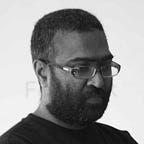Boiling Bangalore…
This is the fourth article in the series on Organizational Learning Disabilities.Let me tell you a story that I call ‘The parable of boiling Bengaluru’, it goes like this …
Once upon a time there was a village called Bengaluru, established by Hiriya Kempegowda. Like all good kings, he built temples, dug ponds and planted trees. Tipu Sultan created Lalbagh with trees brought from across the world with a beautiful lake inside it.Then came the British who loved the place because of the pleasant weather it offered; They too built lakes and planted trees. It came to be known as ‘Pensioners’ paradise’.
Fast forward to the year 2000…. Bengaluru became the Silicon Valley of India. Even the big brothers, (read American presidents) started noticing the rise of this city. With this growth, slowly and steadily over the next fifteen years all the poor lakes established either became IT parks, condominiums or malls covered with glass that radiated heat back to the atmosphere. And then there came a call for bigger roads and a bigger airport. A lot of lives (trees) were sacrificed.
Zoom ahead to year 2019 …. People from across India flocked to Bangalore due to thriving economy. The population moved closer to 2 crore-mark. However, they started buying water (the ground water depleted), used air conditioners (temperature touched 40 degree Celsius in summer), Waste was strewn around across the city (over-consumption and improper waste management) and started to wear masks or buy air purifiers (Poor air quality). Even Niti Ayog (Planning Commission) predicted that there would not be any ground water in Bangalore in a few years.
Zoom ahead to 2040 … What would be the situation of Bangalore, if this trend continues?
This sounds very similar to The Parable of the boiled frog from Peter Senge’s ‘ The Fifth Discipline’: “ If you place a frog in a pot of boiling water, it will immediately try to scramble out. But if you place the frog in room temperature water … he’ll stay put. Now, if the pot sits on a heat source… As the temperature rises, the frog will do nothing. In fact, he will show every sign of enjoying himself. As the temperature gradually increases, the frog will become groggier and groggier. Though there is nothing restraining him, the frog will sit there and boil.”
The frog’s internal apparatus for sensing threats to survival is geared to only sudden changes in his environment, not slow, gradual changes. Even human systems have the same disability — not sensing slow gradual changes (like in the story of Bengaluru). The challenge seems to be that we are operating at a pace and frequency and not able to slow down.
This is not only about what is happening to Bangalore. One can see this in what is happening in organizations, industry, in global economy, the growing intolerance to ‘what is not me’, spread of ‘terror attacks’, strong global movement toward ‘the right’ and even how ‘the screens’ have started ruling our lives.
I believe that only by slowing down we can see the slow gradual changes early enough, which is just the first step. The principle from particle physics ‘The moment you observe, it changes’, seems relevant to behaviors of human systems too.
Presencing Institute lists down 13 principles of Ecosystem Leadership. Even though all the principles are very relevant in this context I just want to quote two principles:
“Principle №4: Co-sense: Build mechanisms and infrastructures that allow communities and systems to sense and see themselves. When these moments happen, collective consciousness begins to shift from ego to eco, i.e., we see a reintegration of mind and matter on the level of the collective.” Principle №2 — Sense: Always sense the emerging field of possibilities: around you, within you, through you. Take time to expand and deepen your sensing capacities. Develop a sensibility for coherence, health, rhythm and timing so that you can notice when something needs to shift.
The questions to reflect and respond on are:
- What do you do to sense what is emerging? What are your practices of slowing down?
- How do you build capacity to ‘sense’ in people you lead?
- What kinds of mechanisms and infrastructures have you seen helping organizations and communities to sense and see themselves continuously?
With inputs from Deepa Ram Bhat
Originally published at https://www.linkedin.com.
